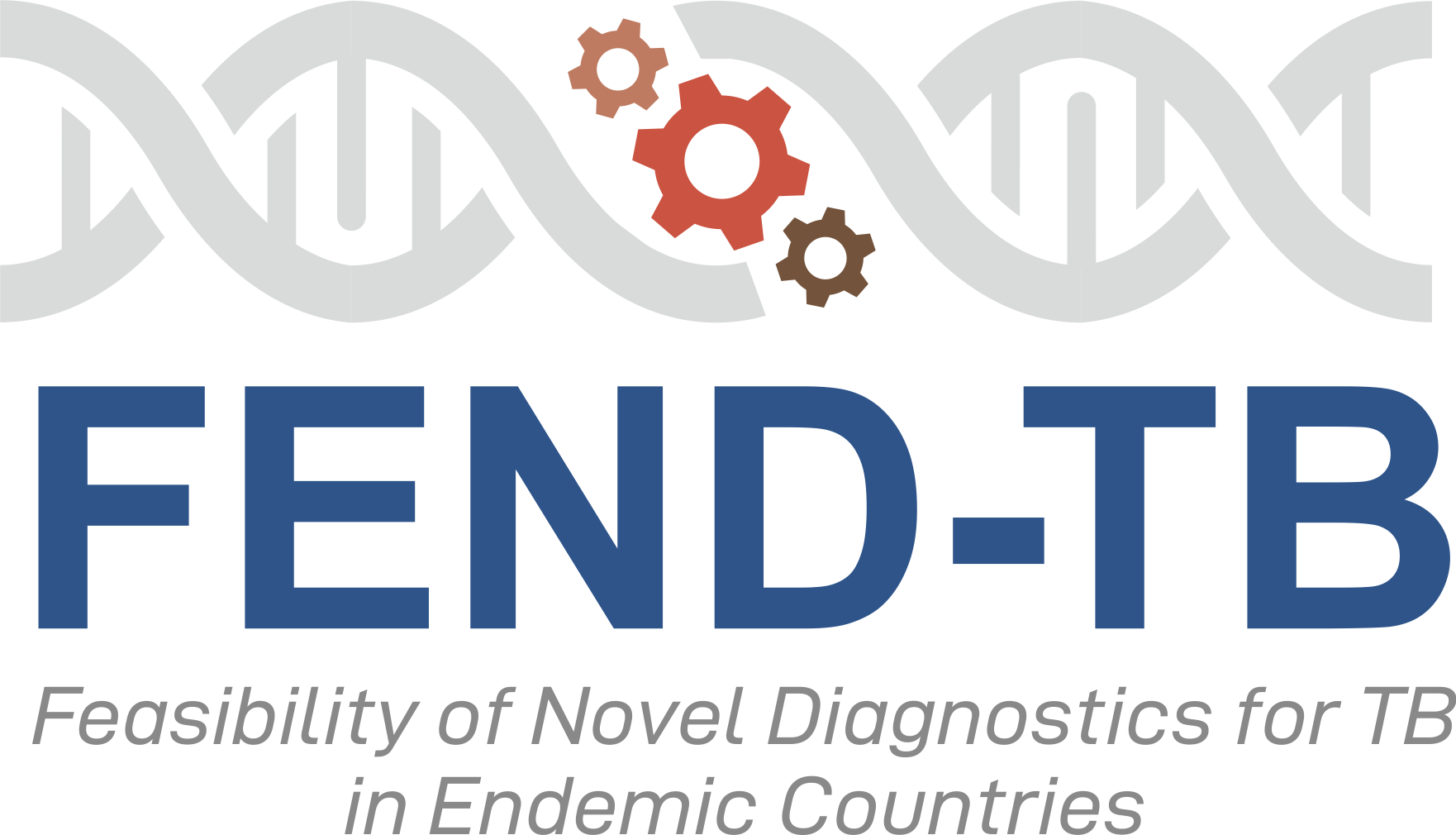Information for Manufacturers

FEND mission is to support the evaluation of early-stage TB diagnostics & novel diagnostic strategies in the context of existing clinical algorithms in TB endemic countries.
FEND for TB will perform proof-of-principle studies of novel diagnostics & strategies and provide feedback to diagnostic developers on the performance of the technologies and their most effective use in endemic settings.

Call for Partners
Call for proposals for the evaluation of new TB diagnostics and testing strategies.
Expression of interest: Test developers to participate in Rutgers FIND initiative for the feasibility of novel diagnostics for TB in endemic countries
FAQs
What are the benefits from participating in the FEND-TB initiative?
- Free-of-charge independent evaluation in state-of-the-art clinical trials conducted in up to 5 sites across Africa, Asia, and South America for feasibility and evaluation studies
- Rapid feedback on the performance of the technologies and their most effective use in endemic settings
- Laboratory-based evaluation of assays using banked samples before entry to clinical evaluations to assess if prototype modifications are warranted to improve functionality or accuracy
- Economic and transmission modeling to examine the impact of novel TB diagnostic assays on the performance of the TB care cascade, long-term health outcomes and cost-effectiveness
- Support from FEND-TB experts to tailor fit-for-purpose product development plans to accelerate evidence generation for policy and regulatory review
Which tests are accepted in the program?
- Non-sputum-based diagnostics and/or sampling strategies for detection of M. tuberculosis bacterial and host targets
- Diagnostics developed for Pediatric TB
- Diagnostics developed for subgroups, e.g., HIV-infected individuals
- Sputum and non-sputum-based diagnostics developed for use at the point of care (POC)
- Diagnostics enabling rapid drug susceptibility testing at or near POC.
FEND-TB studies will be done at 5 clinical sites encompassing multibacillary and paucibacillary TB, pulmonary (PTB) and extra-pulmonary TB (EPTB), drug-susceptible and drug-resistant PTB, both sexes and all ages, HIV-positive and negative people, and key comorbidities including diabetes mellitus.
Where I can submit my application?
Expressions of interest (EOI) are to be submitted via FIND’s Technology Scouting Submission Webform. Please select ‘Tuberculosis’ as the ‘Disease Area’ and ‘FEND-TB’ as the ‘Disease Area Subtype’ on the form and upload the completed submission template and supporting materials.
If required, FIND can sign a Confidentiality Disclosure Agreement with interested developers prior to their form submission. Please contact us on technology@finddx.org
When can I expect feedback on my application?
Following submission, technologies will be reviewed by the FEND-TB Evaluation Committee, and selected technologies will be invited to joint development of a tailored project plan.
FEND-TB will review submissions at quarterly intervals and submissions are encouraged as early as possible for planning purposes. Manufacturers can expect to receive feedback on their application within 4 weeks from the closure of the current call for proposal.
There are 3 possible outcomes from the technology review:
- Submission accepted: Manufacturers are approached for the drafting of the collaboration agreement and to define the evaluation protocols.
- Submission rejected: Manufacturers are directed towards alternative programs to support the development of their technology. Future applications to FEND are not prevented.
- Follow up required: Additional information are needed before confirming the acceptance in the program. Manufacturers are requested to provide additional information to the technology review committee.
What are common rejection reasons?
The list below summarizes the most common reasons for which technology is not accepted in the program:
- The proposed technology is relatively early in development such that field evaluation may not yet be warranted. Manufacturers are invited to reapply to FEND-TB once the technology is ready for field testing
- The proposed technology is relatively late in development such that large studies, beyond the scope of FEND-TB, appear to be warranted
- The proposed technology appears to have a low likelihood of implementation in a near-care or point-of-care test
- Insufficient information was provided for the Technology Selection team to accept the technology for the FEND-TB program
- The technology submitted is not for TB diagnostics
- The proposed technology cannot be evaluated within the approved protocols for FEND-TB
My technology has been accepted into the program. How will it be evaluated?
Accepted technologies will be evaluated through a phase-gated approach:
- Diagnostics are first evaluated in a laboratory setting, to ensure minimum performance requirements are respected
- If criteria from the lab evaluation are met, technologies are tested in the field, in at least one of the three FEND protocols: Adult, Paediatric, Drug Resistance
- Clinical evaluation is split into 2-3 stages: the first evaluation is performed on a small set of clinical samples; if performance criteria are met, the diagnostic is further tested in 1-2 longer evaluations with a larger sample base and more stringent criteria. Test in additional FEND sites or additional FEND protocols is usually granted after successful completion of stage 1 clinical evaluation
- Manufacturers will receive a progress report at the end of each phase
- Technologies not meeting the next stage criteria will be no longer evaluated; a final evaluation report will be issued to manufacturers
- Future applications to FEND are not prevented, provided the improvements have been addressed
Do I need to pay for the evaluation?
FEND evaluations are provided free of charge to the manufacturers.
Manufacturers are expected to supply the diagnostic test in sufficient quantity to cover the planned evaluation protocol and cover any cost associated with shipping the material, training the users and returning the material (if needed) at the end of the evaluation.
In addition, manufacturers are expected to provide insurance for loan instrumentation, if required.

